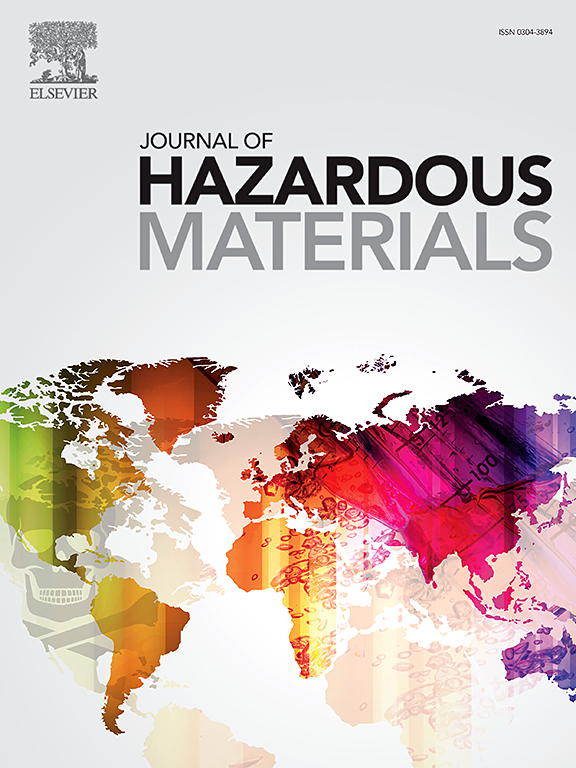Periphytic biofilm (PB) in paddy field: A natural cadmium barrier for rice (Oryza sativa L.) safe production through physiological detoxification and gene regulation
IF 11.3
1区 环境科学与生态学
Q1 ENGINEERING, ENVIRONMENTAL
引用次数: 0
Abstract
Periphytic biofilm (PB) is ubiquitous in paddy fields and has significant impacts on the behavior of cadmium at the soil-water interface. However, its effects on rice growth and Cd accumulation remain largely unknown. Here, we conducted pot and field experiments to explore how PB affects rice growth and Cd migration pathways. Results showed that PB promoted rice growth and alleviated the toxic effects to rice in Cd-polluted soil, reducing Cd accumulation in rice shoot, root, and grain under both pot and field trials. PB treatment reduced the activities of antioxidant enzymes, particularly superoxide dismutase in rice leaves, which indicated less Cd-induced damage in rice leaves. Furthermore, PB enhanced the formation of iron/ manganese plaque around rice roots by 21-34% under Cd-polluted soil, and increased the nitrogen and phosphorus uptake of rice root significantly. These were further verified by transcriptomic analyses that the expression of Cd-uptake associated genes such as OsCDT9, LCT, and HMA5 of rice plants in PB treatment was down-regulated, while nutrient uptake-related genes including OsISC12, OsGLU, and OsHAK7 were up-regulated. This study not only expands our understanding of Cd biogeochemistry in paddy ecosystem, but also provides a promising in situ approach to reducing Cd migration from soil to rice grain.

水田周围植物生物膜:通过生理解毒和基因调控实现水稻镉安全生产的天然屏障
水田中普遍存在的周围植物生物膜(PB)对镉在土壤-水界面的行为有重要影响。然而,其对水稻生长和镉积累的影响在很大程度上仍然未知。本研究通过盆栽和田间试验,探讨PB对水稻生长和镉迁移途径的影响。结果表明,在盆栽和田间试验中,PB促进了镉污染土壤中水稻的生长,减轻了镉对水稻的毒害作用,减少了水稻茎部、根系和籽粒中镉的积累。PB处理降低了水稻叶片中抗氧化酶的活性,特别是超氧化物歧化酶的活性,表明cd对水稻叶片的伤害较小。镉污染土壤下,PB可使水稻根周铁/锰膜的形成提高21-34%,显著提高水稻根系对氮和磷的吸收。转录组学分析进一步证实,PB处理下水稻cd摄取相关基因OsCDT9、LCT和HMA5的表达下调,而营养摄取相关基因OsISC12、OsGLU和OsHAK7的表达上调。该研究不仅扩大了我们对水稻生态系统中镉生物地球化学的认识,而且为减少镉从土壤向稻谷的迁移提供了一种有希望的原位方法。
本文章由计算机程序翻译,如有差异,请以英文原文为准。
求助全文
约1分钟内获得全文
求助全文
来源期刊

Journal of Hazardous Materials
工程技术-工程:环境
CiteScore
25.40
自引率
5.90%
发文量
3059
审稿时长
58 days
期刊介绍:
The Journal of Hazardous Materials serves as a global platform for promoting cutting-edge research in the field of Environmental Science and Engineering. Our publication features a wide range of articles, including full-length research papers, review articles, and perspectives, with the aim of enhancing our understanding of the dangers and risks associated with various materials concerning public health and the environment. It is important to note that the term "environmental contaminants" refers specifically to substances that pose hazardous effects through contamination, while excluding those that do not have such impacts on the environment or human health. Moreover, we emphasize the distinction between wastes and hazardous materials in order to provide further clarity on the scope of the journal. We have a keen interest in exploring specific compounds and microbial agents that have adverse effects on the environment.
 求助内容:
求助内容: 应助结果提醒方式:
应助结果提醒方式:


